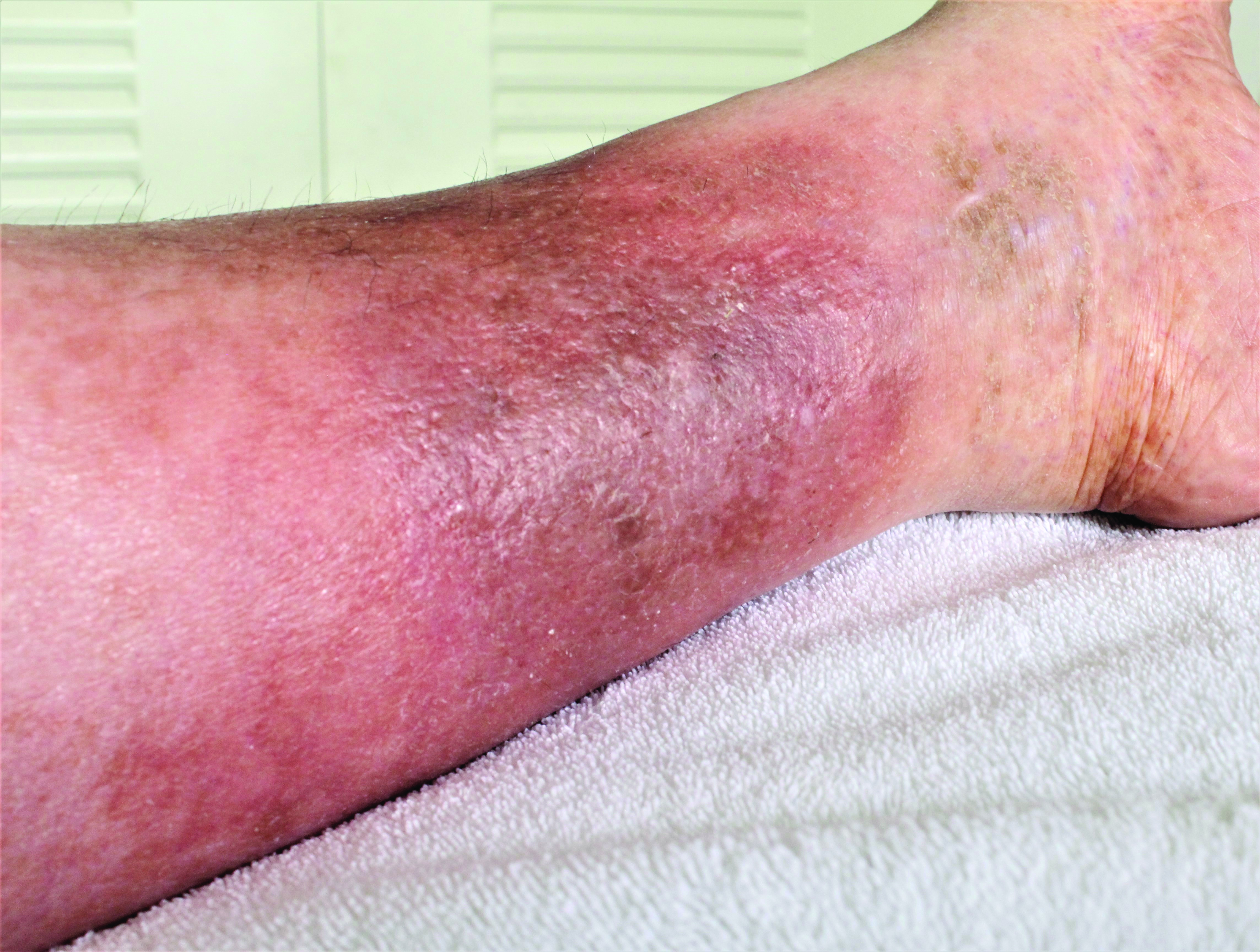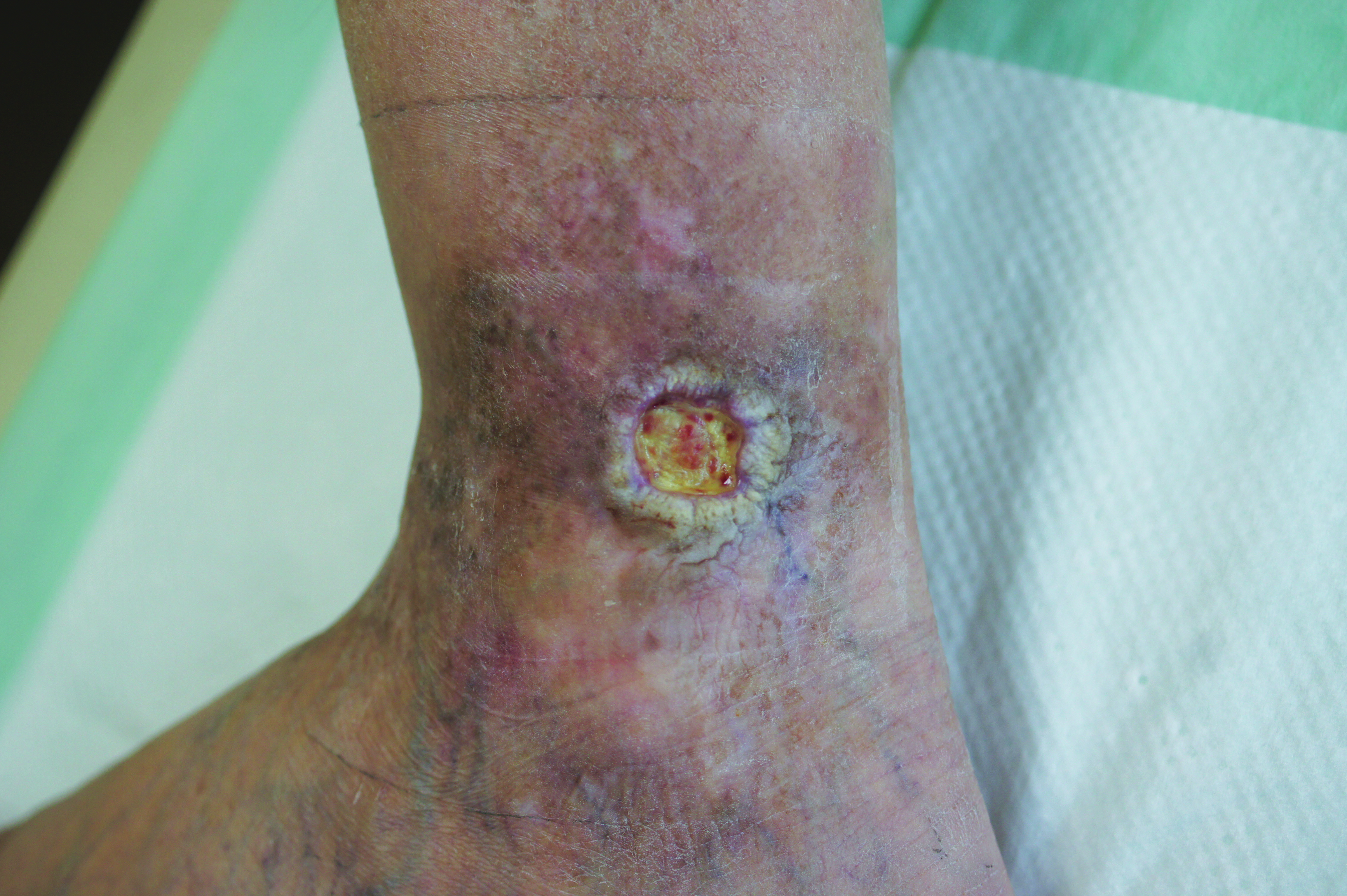"Like the diabetic foot ulcer, many people with chronic vein problems that include skin changes and ulcerations don't realize what's wrong in the early stages. It's a sign of increasing venous hypertension in our society that goes underrecognized and underdiagnosed," says Michael Greer, MD, vascular surgeon with USA. "Our goal is to identify vein problems earlier – before ulcers form – and when they're most easily and effectively treated."
Could You Be at Risk?
People at risk for CVI are those with a history of blood clots in their legs, although not everyone with the condition has this prior history. Noticeable signs are swelling, especially at the end of the day, and discoloration at the ankle area. As it worsens, small scabs or ulcers occur at the ankle areas. These will continue to progress and develop into open, weeping ulcers that can be very painful.
Individuals who develop the most severe forms of venous problems have severe pain, chronic open ulcers, skin discoloration of the ankles or shins, thickening skin, restriction of blood flow, and swelling in the feet, ankle or legs that does not respond or worsens despite non-surgical treatment. This happens because of increased pressure in the leg veins. Essentially, fluid builds up in the legs because some part of the veins isn't working like they should.
"When it gets to this point in the disease process, some people are unable to work and function normally while an ulcer is present. There's a risk of becoming permanently disabled, and many have a much lower quality of life," says Dr. Greer. "Ulcers at the ankle area due to venous disease, can often be healed sooner and have less recurrence with procedures that lessen the venous pressure in the legs."
Treating the Underlying Problem
In some cases, it can take weeks to months to heal some sores, with some individuals being unable to work and function normally while the ulcer is present. For many years, the only treatments available were wrappings and compression hose. Today, in addition to compression stockings and prescription creams, the most important step is treating the underlying conditions that cause fluid buildup and circulation issues. USA Vascular surgeons can help alleviate the pressure in damaged veins by closing them off or using stents.
"We start with an evaluation that includes a physical exam and typically an ultrasound test to identify the abnormal veins causing problems. If CVI is diagnosed and a procedure is recommended, we discuss those options and schedule a procedure at the appropriate facility. In many cases, procedures can be performed in the USA Vascular office with patients going home the same day. For patients with more involved venous issues, the USA surgeon may need to perform the procedure in a hospital setting to provide effective relief. It's important to note that these problems are treatable, and more than 80% of people will see significant improvement in their symptoms," says Dr. Greer.
Other ways to help the condition include losing weight, exercising regularly, and avoiding prolonged standing. When possible, sitting with your legs elevated to heart level is also helpful. Since CVI is common in people who stand every day for their job – like factory or healthcare workers – wearing 20 mm compression stockings is recommended to combat future vein problems."I want people to understand that ulcers on the legs and feet aren't normal. Talk with your physician and seek treatment immediately if you notice these changes. Once you have an ulcer, you're at increased risk of having another," says Dr. Greer. "Anyone with an ulceration should have an ultrasound study to determine the cause, and work with a vascular specialist to address the problem. The right treatment at the right time can decrease the risk for complications now and in the future – and help you live a more active and healthy life."
USA Vascular specializes in the treatment of diseases of the arteries and veins including PAD, carotid artery disease, aneurysms, CVI, varicose veins, and more. We offer multiple office locations with easy parking, and surgical services at most local hospitals – so you choose what works best for you. Visit universitysurgical.com or call 423.267.0466 to learn more.
Noteworthy:
It's a sign of increasing venous hypertension in our society that goes underrecognized and underdiagnosed." Michael Greer, MD
For more information:
To learn more, visit universitysurgical.com or call 423-267-0466.

